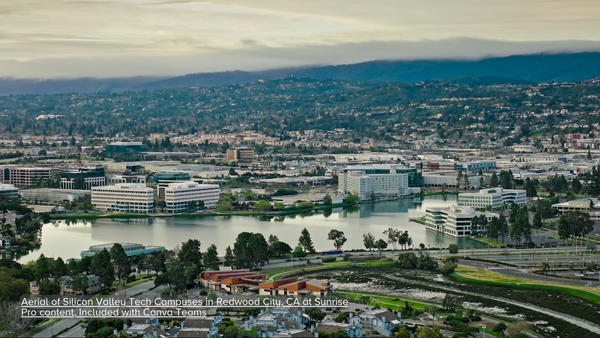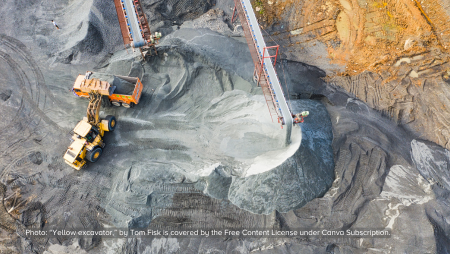An investigation into the year-over-year growth in Apple's annual emissions since 2010 shows that the company is on the wrong side of sustainability, with substantial growth in manufacturing and transportation emissions, including those per product sold. This historical growth in emissions combined with Apple's gargantuan land and water footprints paint a dirty portrait of a company claiming to be a leader in the battle against climate change.
Apple recently announced that it had spent $848 million on a 25-year purchase of solar power from First Solar in California. The deal makes Apple's US operations 100 percent powered by renewable energy, and is the largest solar deal on record. The company also announced in February a $1.8 billion plan for the construction and operation of two data centers in Ireland and Denmark that will provide renewably powered Apple data to its European customers, just as it already does for those in the United States. And on April 16, Apple announced a partnership with SunPower to build two solar plants in China, to power its corporate and retail facilities in the region. According to its 2015 Environmental Responsibility Report, Apple has avoided about 750,000 tons of carbon dioxide emissions since 2011 with its various energy-saving measures. In the midst of a climate crisis fueled by the burning of fossil fuels, these are undeniably good moves. As such, Apple is deservedly receiving praise for these efforts at its US operations.
Lisa Jackson, former head of the Environmental Protection Agency (EPA), and now Apple's vice president for environmental initiatives, has spearheaded these projects for the company since mid-2013. Jackson announced the solar deal in a televised conversation with Jeffrey Ball for The Wall Street Journal in late March. While speaking with Ball, Jackson said that it was important to her and the company to show others that it is possible to earn profit, return money to shareholders and "still be on the right side of sustainability."
While Jackson's statement rings true for Apple's US facilities, those represent just 1 percent of the company's 2014 emissions. An investigation into the year-over-year growth in Apple's annual emissions since 2010 shows that the company is in fact on the wrong side of sustainability, with substantial growth in manufacturing and transportation emissions, including those per product sold. This historical growth in emissions combined with Apple's gargantuan land and water footprints paint a dirty portrait of a company claiming to be a leader in the battle against climate change.
Apple's manufacturing and transportation emissions have grown by 131 percent since 2010
Between 2010 and 2014, Apple's annual carbon emissions grew by 131 percent, with an average increase of 25 percent per year. This might seem counterintuitive, given Apple's reductions in emissions at its US facilities. The increase comes from huge jumps in emissions stemming from manufacturing and transportation of products, which have climbed by an average of 39 percent per year since 2010. (These figures were reached using Apple's Environmental Responsibility Reports for 2014 and 2015, and from historical newsaccounts of previous reports on total emissions including manufacturing and transportation of products, since Apple has removed them from its website.)

During this time period, Apple pumped more than 136 million metric tons of carbon dioxide into the atmosphere, or the equivalent of nearly 147 billion pounds of coal burned, according to the EPA's emissions calculator. By comparison, Apple's US savings of 750,000 metric tons - which amounts to half a percent of its total emissions since 2010 - is chump change. Of course, it makes sense that Apple's emissions are climbing, because so too are its sales. A company's emissions will obviously increase as it manufactures more product. But the huge spike in Apple's emissions since 2010 can't be attributed to growth in sales alone. It turns out that, despite the marketing and public relations emphasis Apple places on its commitment to continuously improving the "green" nature of its products, the company's own data show a huge increase in manufacturing and transportation emissions per unit sold. That means that production of Apple's products is getting progressively dirtier, in terms of emissions - not cleaner and not greener.
In 2010, per Apple's emissions and sales data, it emitted 69.1 kilograms of carbon dioxide (from manufacturing and transport) per product sold. By 2011, after the introduction of the iPhone and iPad, that number had increased by more than 34 percent, to 92.9 kilograms of carbon dioxide per product. While this number dropped by about 7 percent in 2012, it climbed back up to 95.6 kilograms in 2013, and grew again in 2014 by another two kilograms. This equates to an overall 41 percent increase since 2010. Far from lessening the carbon footprint of its products, Apple has actually made them more carbon-intensive and harmful to the environment. (These figures were reached by dividing Apple's reported emissions for a given year by the total number of units sold in that same year, as reported in their annual 10-K reports.)
This historical trend of increasing emissions is also visible in the lifecycle carbon footprint of its products. Though Apple emphasizes the work it has done to reduce the amount of energy consumed through use of its products on the customer end,lifecycle emissions for its products have climbed dramatically since 2009 due to increases in emissions related to manufacturing and transportation. Apple reports the largest increase in this regard for its line of MacBook computers, which on average increased by 262.1 kilograms of carbon dioxide per product lifecycle, per year, for a 121 percent increase over 2009. (These and the following figures were calculated by averaging the total lifecycle emissions, and manufacturing and transport emissions, for lines of Apple products made and sold during a given year.)
Average manufacturing and transport emissions for iPhones have more than doubled since Apple released its first report on the 3G model in 2008, and those associated with the iPad have nearly doubled since it was introduced in 2010. The total lifecycle emissions for these products have increased since their debuts by 46 and 64 percent, respectively.

Janet Gunter, cofounder of The Restart Project, a London-based organization that teaches people how to fix consumer electronics in order to divert them from the toxic and hazardous electronic waste stream, praises Apple for its increased transparency in reporting its carbon emissions, and for powering their data with renewable energy sources. But, she refers to the resource-intensive iPhone as the company's "biggest weakness."
Gunter explained that the 80 million quarterly sales target for iPhone 6 that Apple set when it launched the device in 2014 would result in manufacturing emissions "equal to the yearly carbon footprint of the London boroughs of Westminster, Camden, and Lambeth. The yearly carbon footprint, of all industry, residential use, everything."
In his interview with Jackson for The Wall Street Journal, Jeffrey Ball pushed Apple's head of environmental initiatives to explain what Apple has done to cut its manufacturing emissions. Her response of "little, so far," seems to suggest that at least some efforts have been made. Perhaps what she referred to with this statement is the one exception to Apple's rule of emissions increase: Mac computers. The company reports a 61 percent decrease in average lifecycle emissions for its line of desktop computers since 2009. While this is both noteworthy and praiseworthy, sales of Macs accounted for just 7 percent of Apple's fiscal year 2014 sales, according to its 10-K report for 2014, so the big picture impact of this reduction is quite small. In fact, it is the increasingly dirty iPhone and iPad that provided the majority of the company's sales - 88 percent, to be exact - in 2014. This is why, despite the impressive cutbacks to emissions associated with Macs and the efforts at Apple's US facilities, manufacturing and transport emissions per product sold have grown year-over-year, with the exception of a dip in 2012. It is misleading at best, and duplicitous at worst, for Jackson to suggest that Apple has made efforts to reduce manufacturing emissions when they have quite clearly been on the upswing for seven years.
The real carbon footprint of the iPhone is bigger than you think
The reality of Apple's ever-increasing harmful impact on our climate and planet is distressing as is, but is even worse when one takes into account the emissions associated with data usage. Apple users might have the impression, given the company's recent branding emphasis on this, that the data they use is powered by renewable energy. For example, in her interview with Ball, Jackson emphasized that using iTunes, the App Store, iCloud, Siri and iMessage does not generate carbon dioxide emissions because the company's data servers are powered with renewable energy.
But in reality, how one uses an iPhone, for example, mostly falls outside of the purview of Apple's data centers. Pew Research Center found in its latest survey of smartphone users that the most common uses of the device today are, in order of rank: text messaging, voice and video calling, internet, email, social networking, reading news, watching video, playing games, using maps, and listening to music or podcasts. This means that the things we use our smartphones for the most are not backed by Apple's renewably powered data.
Though Apple reports that the iPhone 6 emits just 10.45 kilograms of carbon dioxide over a three-year period due to customer use, data usage alone - given the average rate of one gigabyte per month, and an accepted industry estimate of two kilowatt hours of energy needed per gigabyte - equates to 21 kilograms of carbon dioxide emissions generated by a user every year. Multiply that by the three-year life expectancy that Apple assumes for the device, and you've got a carbon output that is more than six times higher than that which the company projects in its environmental report for the iPhone 6. This is dangerously false advertising, especially when one considers the cumulative emissions impact of all iPhones sold to date: 28 million metric tons of carbon dioxide, at minimum, pumped into the atmosphere by the data used on iPhones since 2007. Those emissions are equal to those generated by burning over 30 billion pounds of coal. (The figure of 28 million metric tons of carbon dioxide was reached by multiplying the annual energy generated by data use on a smartphone by two (to account for the fact that the average person uses their smartphone for two years before upgrading); then by the total number of iPhones sold to date (665,051,000), as reported in Apple's annual 10-K reports and most recent quarterly earnings statements.) Of course, Apple is not responsible for how its customers use their devices. But it is responsible for producing trusted and respected product reports that substantially underestimate the carbon dioxide generated by their products.
Apple is taking more than the earth can give
In a video released on Earth Day 2014, Apple CEO Tim Cook states that Apple is dedicated to making the world a better place. As he narrates the nearly two-minute video, images of lush wilderness and thriving ecologies flash before the viewer's eyes. Punctuated with scenes of Apple products and the solar arrays used to power its US data centers, the video suggests a perfect symbiosis between the company and the natural world. So too does Apple's most recent advertising campaign for the iPhone 6, which features striking user-generated images, most depicting beautiful natural landscapes. High-resolution images of snowy mountaintops, starry skies and a sunset-hued image of the famed Yosemite Half Dome, embedded in the operating system named for the cherished national park, suggest the same. This theme in Apple's branding dates back to 1976, when the original company name, Apple Computer, forged a mythical marriage of opposites between nature and computer technology.
But the perfect symbiosis that Apple presents in its commercials, in its operating system, and on the pages of its website and reports is far from the truth. Apple's growing carbon footprint is a testament to this. So too is a forthcoming report from Friends of the Earth, which details the shocking size of the land and water footprint of Apple products. Though Apple touts the preservation of 36,000 acres of US forests in its latest Environmental Responsibility Report, that represents just 1 percent of the company's total land footprint. According to the report, at the company level, in just one year, Apple's production requires 5,251 square miles of land (or 3.4 million acres), and 5.9 billon tons of water. Much of that is due to production of the iPhone, as Friends of the Earth estimates that the average smartphone requires 194 square feet of land, and 3,370 gallons of water to produce.
By these measures, the total land footprint of the 169.2 million iPhones sold in 2014 is equal to nearly 1,178 square miles - four times the size of New York City - and more than 2 billion tons of water were required for their production. That means that to date, Apple has used more than 8.3 billion tons of water manufacturing iPhones alone. That's equivalent to all the water that the entire population of Africa lives on in one year. If Apple wants to make the world better, as Tim Cook says, and "be on the right side of sustainability," as Lisa Jackson claims, then it needs to truly take emissions reduction and resource consumption seriously. Its efforts so far amount to not much beyond profit-boosting PR.
In an email exchange with Apple about the historical growth in manufacturing and transport emissions per unit sold, a representative of the company challenged this trend by claiming that published data for 2012 is inaccurate, but did not provide in its place what the company considers accurate data. Apple claims the inaccuracy stems from internal underestimation of emissions related to manufacturing in 2012, which would suggest that manufacturing emissions for that year are actually higher than Apple initially reported.










